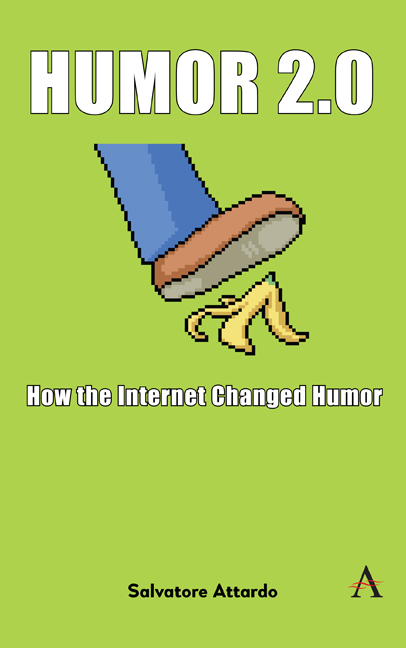Part 3 - Multimodality
Published online by Cambridge University Press: 28 February 2024
Summary
Part 3 of the book addresses multimodal texts, i.e., texts that operate in the linguistic modality (they use language, in other words) and in some other additional modality or modalities. For example, film, video, or graphics are other modalities (visual, auditive, etc.). Gestures are another modality as well, including facial expressions, hand gestures, body stance, and eye gaze. In short, meaning, broadly intended, can be conveyed in many different ways, only some of which are linguistic. Of course in an image or a silent video no language is used and quite simply the linguistic modality is not used, and, as Seinfeld used to say, there's nothing wrong with that.
In particular we will consider in embarrassment comedy (also known as cringe comedy), one of the defining new genres of the digital age, photobombing, the quintessential visual and non-verbal genre, and the video parody. The latter is exemplified by the Hitler rants, an incredibly popular sub-genre, reaction videos, a parody of a music video by German metal band Rammstein done with legos, and the uniquely digital genre of the rant-to-music video, in which someone's rant is set to music.
- Type
- Chapter
- Information
- Humor 2.0How the Internet Changed Humor, pp. 173 - 174Publisher: Anthem PressPrint publication year: 2023

